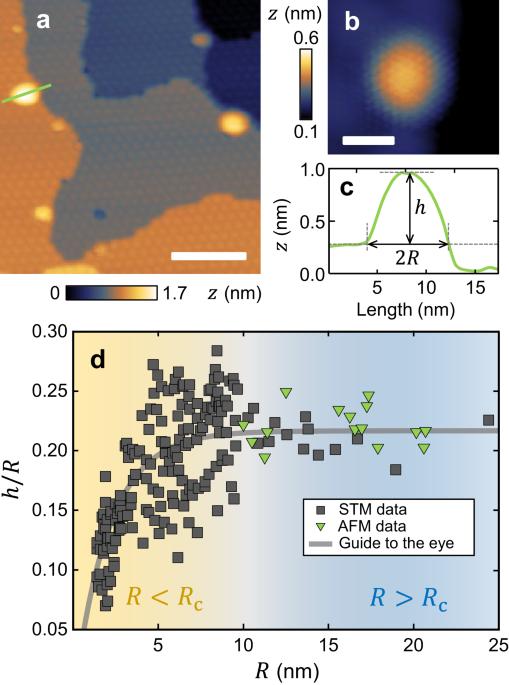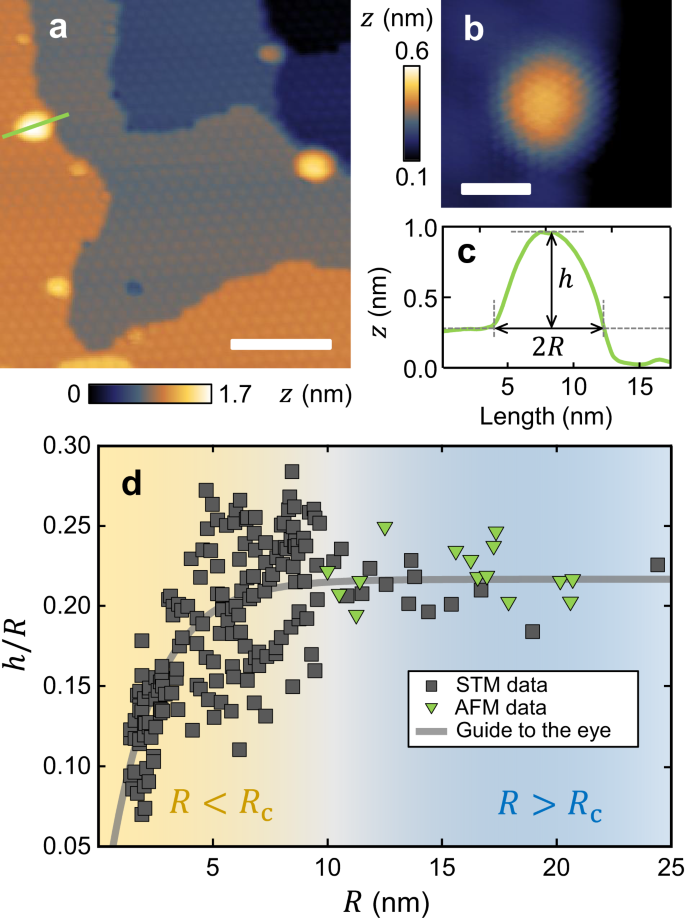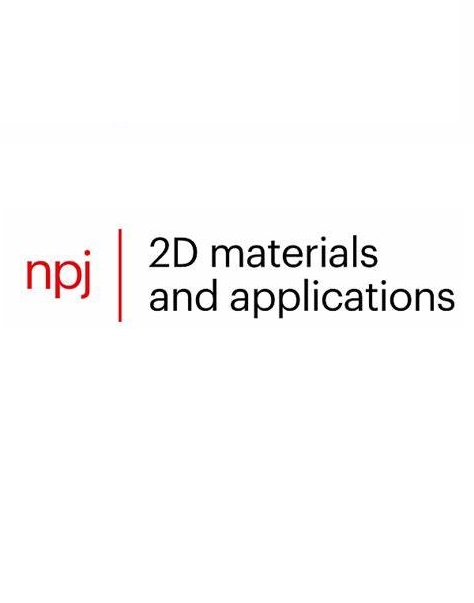Tunable strain and bandgap in subcritical-sized MoS2 nanobubbles
IF 9.1
2区 材料科学
Q1 MATERIALS SCIENCE, MULTIDISCIPLINARY
引用次数: 0
Abstract
Nanobubbles naturally formed at the interface between 2D materials and their substrate are known to act as exciton recombination centers because of the reduced bandgap due to local strain, which in turn scales with the aspect ratio of the bubbles. The common understanding suggests that the aspect ratio is a universal constant independent of the bubble size. Here, by combining scanning tunneling microscopy and molecular dynamics, we show that the universal aspect ratio breaks down in MoS2 nanobubbles below a critical radius (≈10 nm), where the aspect ratio increases with increasing size. Accordingly, additional atomic-level analyses indicate that the strain increases from 3% to 6% in the sub-critical size range. Using scanning tunneling spectroscopy, we demonstrate that the bandgap decreases as a function of the size. Thus, tunable quantum emitters can be obtained in 2D semiconductors by controlling the radius of the nanobubbles.


亚临界尺寸 MoS2 纳米气泡中的可调应变和带隙
众所周知,在二维材料与其基底之间的界面上自然形成的纳米气泡可作为激子重组中心,因为局部应变会导致带隙减小,而带隙减小又与气泡的长宽比成正比。一般认为,高宽比是一个与气泡大小无关的普遍常数。在这里,我们通过结合扫描隧道显微镜和分子动力学,证明了在低于临界半径(≈10 纳米)的 MoS2 纳米气泡中,普遍的高宽比被打破,高宽比随着尺寸的增大而增大。因此,额外的原子级分析表明,在亚临界尺寸范围内,应变从 3% 增加到 6%。利用扫描隧道光谱法,我们证明带隙随着尺寸的增大而减小。因此,通过控制纳米气泡的半径,可以在二维半导体中获得可调量子发射器。
本文章由计算机程序翻译,如有差异,请以英文原文为准。
求助全文
约1分钟内获得全文
求助全文
来源期刊

npj 2D Materials and Applications
Engineering-Mechanics of Materials
CiteScore
14.50
自引率
2.10%
发文量
80
审稿时长
15 weeks
期刊介绍:
npj 2D Materials and Applications publishes papers on the fundamental behavior, synthesis, properties and applications of existing and emerging 2D materials. By selecting papers with the potential for impact, the journal aims to facilitate the transfer of the research of 2D materials into wide-ranging applications.
 求助内容:
求助内容: 应助结果提醒方式:
应助结果提醒方式:


